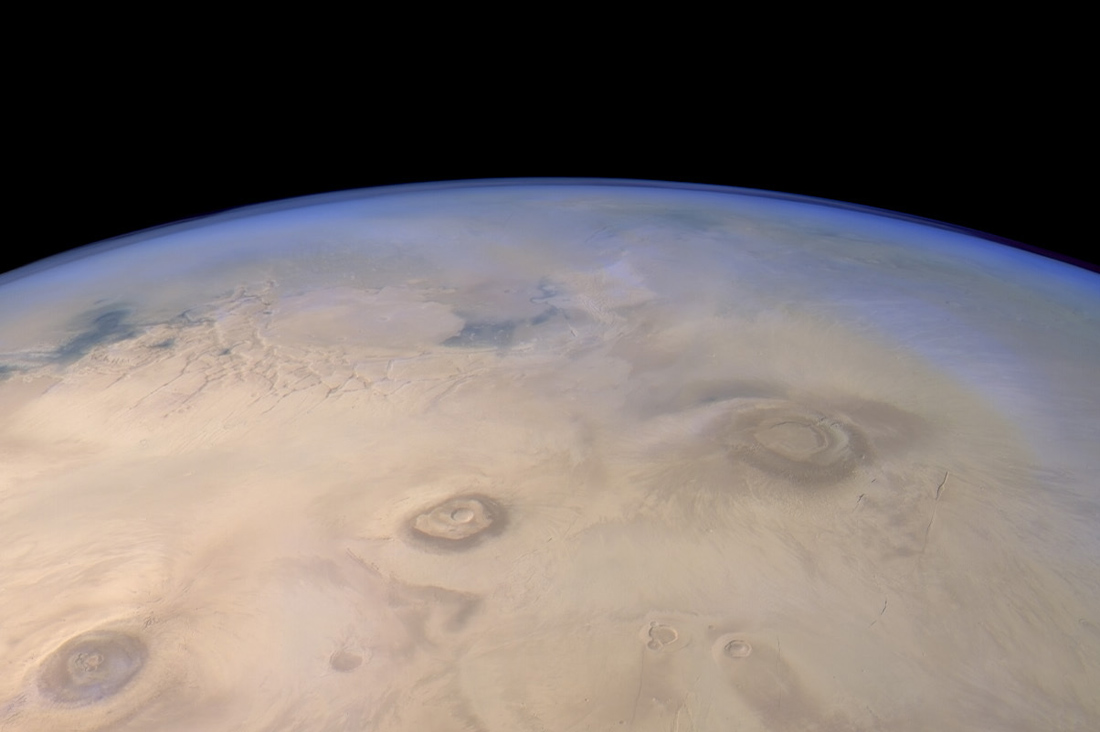Mars Look at Mars Express

The Mars Express European satellite continues its work in orbit around the thirteenth year. This device was launched in cooperation with Roscosmos - we gave a rocket and put several scientific instruments, and the satellite was built by the European Space Agency. Mars Express flies along an elongated orbit, which allows it not only to map the surface, but also to shoot quite scenic views from a long distance. Take a few pictures today.
Mars Express has a large set of scientific instruments that allow it to study the atmosphere and geology of Mars, but the most impressive images are created by the High Resolution Stereo Camera (HRSC), developed in Germany.
All the results of Mars Express are made publicly available , so not only professionals, but also enthusiasts can work with them. For example, this chic panorama was created by space exploration enthusiast Justin Cowart.
')

At the bottom of the frame you can see the cake of the largest volcano in the solar system - Olympus. A little further there are three volcanoes: Arsia, the mountain of Ascaria and Mount Peacock. Near the horizon is the Labyrinth of Night and the western branches of the Mariner Valley.
The shooting was carried out during calm weather, when the atmosphere is clear of dust. Thanks to this, the scattering of sunlight is visible, which colors the atmosphere at the horizon in blue hues.
The HRSC camera uses multispectral (multichannel) shooting technology, i.e. Its sensors cover not only the visible range of light, but also near infrared. And by creating color images, you can alternate different channels, getting not only natural color but also “false”, which allows you to get to know the geological structure better.
For example, this color photo of the South Pole is collected from frames in three spectral ranges: blue, green and near infrared, so the color does not match what our eyes would see. In the visible range, Mars rust is closer to orange or pink, not burgundy. The reddish color of Mars is due to the admixture of iron oxides in its dust, covering almost the entire surface.

The main composition of the polar caps of Mars is water ice . At the South Pole, its thickness reaches 3.5 km, at the North - 1.7 km. Carbon dioxide ice covers only in winter, and the thickness of dry ice is 1-2 meters, rarely more. In this photo we see mostly water ice.
Pay attention to the geometrically correct structures in the lower left corner of the panorama. This site is officially called Inca City - "Inca City". However, the formation of this structure is not connected either with the Incas or with the Martians, but arose under the influence of a large meteorite on the ice cap of Mars.
And this panorama already in natural colors is a winter view of the North Pole of Mars.

In the upper part of the panorama we see a multi-year polar cap consisting of water ice. In the middle part there are fields of black dunes, which are believed to have once been the bottom of the Arctic Ocean of Mars. Even lower surface of Mars, covered with a thin layer of seasonal carbon dioxide ice.
Pay attention to the steep cliffs of the polar cap, which reveal its layered structure. Look at the thin ice glaze covering the Polar region. Consider the rounded halos of craters, which arose when meteorite strikes melted frozen ground water, the mud spread around the boat, but quickly froze.
In March 2016, another ExoMars joint research vehicle should go to Mars. I hope he will please us with no less impressive landscapes, and will expand our knowledge of the structure and evolution of Mars. I will tell you more about it.
The post is based on planetary.org and the Best of Mars community.
Source: https://habr.com/ru/post/390273/
All Articles